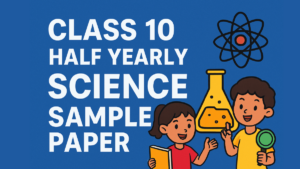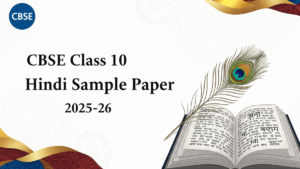NCERT Solutions For Class 10 English First Flight Poetry Chapter 1 Dust of Snow
Robert Frost penned a nice little poem called “Dust of Snow.” This poem shows how essential even seemingly trivial events may be. In this poetry, the poet discusses a crow and a hemlock. Crow symbolizes his dismal and depressing temperament, while hemlock is a toxic tree. Both of these imply that the poet was not in a good mood, and to express his own attitude, he portrays the gloomy, melancholy, and bitter qualities of nature.
NCERT Solutions For Dust of Snow: Video Explanation
Watch the given videos explanation of Dust of Snow for a better understanding of the poem
Dust of Snow NCERT Solutions PDF
A PDF is given below for the students’ accessibility which they can download for future reference
NCERT Solutions of Dust of Snow: Solved Textbook Questions
Thinking about the Poem (Page 14)
Question 1: What is a “dust of snow”? What does the poet say has changed his mood? How has the poet’s mood changed?
Answer: The term “dust of snow” refers to the tiny snowflakes and their constituent parts. The sudden snowfall caused the poet’s mood to alter. His earlier mood of dismay was replaced by one of happiness and joy as he felt revived and energised to enjoy the rest of the day.
Question 2: How does Frost present nature in this poem? The following questions may help you to think of an answer.
(i) What are the birds that are usually named in poems? Do you think a crow is often mentioned in poems? What images come to your mind when you think of a crow?
(ii) Again, what is “a hemlock tree”? Why doesn’t the poet write about amore ‘beautiful’ tree such as a maple, or an oak, or a pine?
(iii) What do the ‘crow’ and ‘hemlock’ represent — joy or sorrow? What does the dust of snow that the crow shakes off a hemlock tree stand for?
Answer: In the poem, Frost presents nature in a very unconventional manner.
- Typically, poets view birds and trees as symbols of beauty and good traits, such as a parrot, peacock, cuckoo, etc. Birds include gorgeous blossoms and bear delectable fruits, while trees themselves are made up of beautiful blooms. Frost included a crow in this poem, which is uncommon for poets to do in their works. A crow is typically a dark-colored bird with a harsh voice that is regarded as a sign of bad luck. As a result, when we read the poem, the word “crow” conjures up gloomy and depressing images in our minds.
- Frost refers to “a hemlock tree,” a deadly shrub with tiny white blossoms. However, the maple, pine, or oak tree, which represent beauty and joy, was not the poet’s choice. He chose the hemlock tree to symbolise his melancholy and regret instead of any of the other lovely trees in nature.
- The “crow” and “hemlock” trees stand in for the poet’s sorrow and melancholy emotions in today’s capitalist society. The snow-covered dust represented his inner delight and vigour. The poet’s initial sad and depressing moments, which were gone as he entered into a joyful and optimistic feeling, are represented by the dust of snow that the crow shakes off a hemlock tree.
Question 3: Have there been times when you felt depressed or hopeless? Have you experienced a similar moment that changed your mood that day?
Answer: Yes, I have experienced countless instances of sadness, depression, and hopelessness as a result of inevitable events in my life. Such instances occasionally resulted from the careless actions and attitudes of other people, and occasionally they did. I once came home from school exhausted and upset. My pet sprung up and gave me an embrace when I got home. This small act of kindness completely altered my mood, and I was overwhelmed by the creature’s thoughtfulness, which made me feel better the rest of the day. I quickly showered, played with my puppy for a while, and gave him a tender touch.











 Class 10 Half Yearly Science Sample Pape...
Class 10 Half Yearly Science Sample Pape...
 CBSE Class 10 Hindi Sample Paper 2025-26...
CBSE Class 10 Hindi Sample Paper 2025-26...
 CBSE Class 10th Maths Competency-Based Q...
CBSE Class 10th Maths Competency-Based Q...











